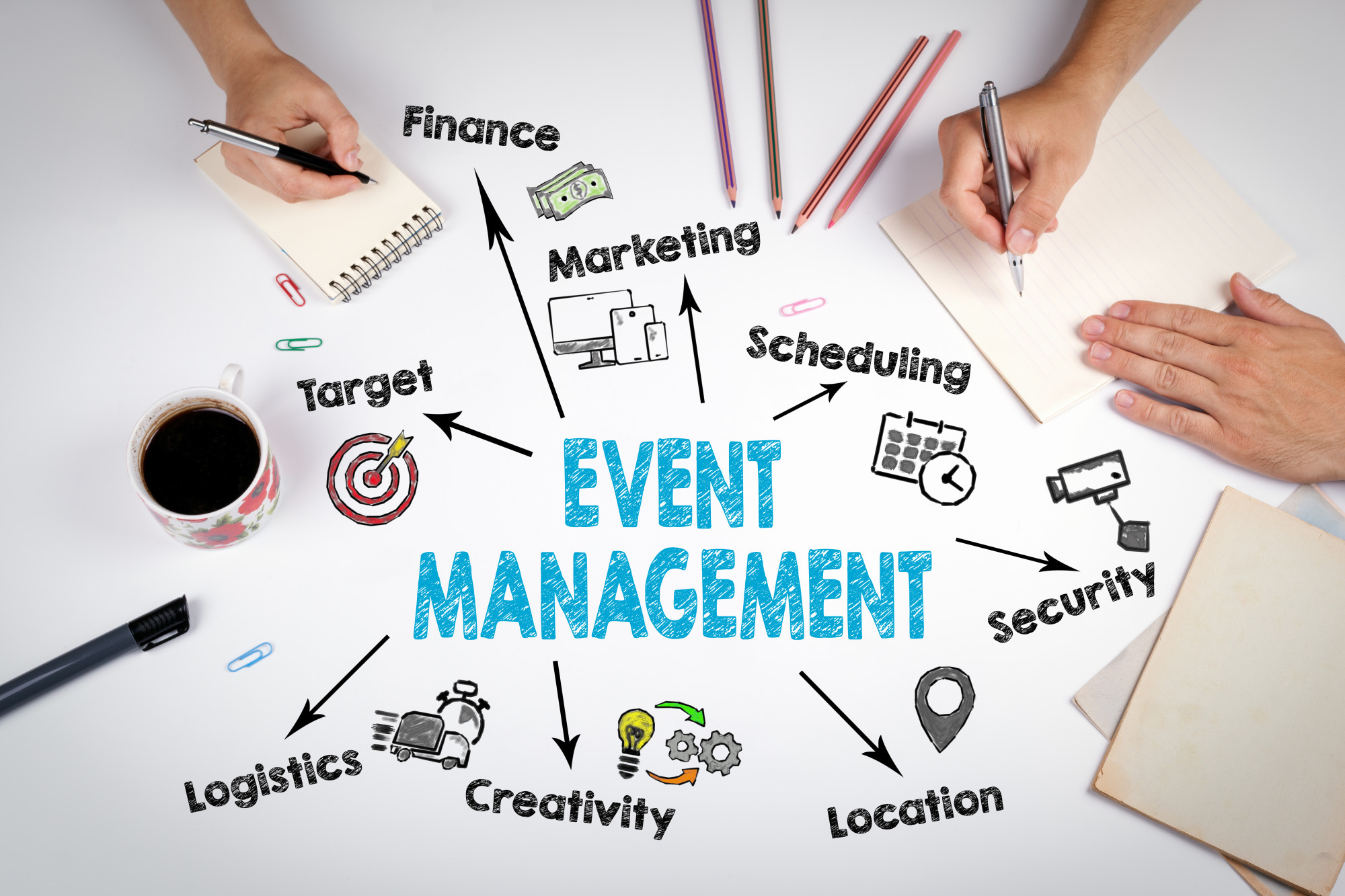Your heart races as you picture the worst-case scenarios:
❗️ A speaker falls ill minutes before taking the stage.
❗️ Your venue suddenly loses power on the event day.❗️ Or worst of all - someone gets hurt at your event.The stomach-churning thoughts keep you up at night.
But even the most chaotic events can be managed - if you plan carefully and systematically in advance.
A simple event risk management checklist can help you identify, prepare for and mitigate potential issues before they derail your event. Let's figure out the 10 must-haves in the checklist to transform worry into a well-laid plan of action.
Table of Content
- Overview
- What is The Risk Management of an Event?
- Five Steps to Managing Risk as an Event Planner
- Event Risk Management Checklist
- Five Elements of Risk Management
- Checklist in Event Management
- Takeaways
- Frequently Asked Questions
Overview
| What is event risk? | Unexpected and unforeseen problems that negatively affect organisers and the company branding. |
| Examples of event risk? | Extreme weather, food safety, fire, disturbances, security threats, financial risk,… |
What is The Risk Management of an Event?
Event risk management involves identifying potential risks or issues that could threaten an event, and then putting processes and precautions in place to mitigate those risks. This helps event organisers have contingency plans ready to minimise disruption and recover quickly if issues do arise. An event risk management checklist is also utilised to ensure every potential threat is crossed.
The Five Steps to Managing Risk as an Event Planner
We know it's stressful as an event planner with all the possibilities that can occur. To save you from overthinking, follow our simple 5 steps to make a perfect risk management plan for events:
• Identify risks - Brainstorm all possible things that could go wrong at your event. Consider factors like venue issues, bad weather, technology failures, speaker cancellations, food issues, injuries, low attendance, etc. Think broadly and put it on a brainstorming tool to keep the ideas intact.
Need new ways to brainstorm?
Use the brainstorming tool on AhaSlides to generate more ideas at work, and when organising event!
🚀 Sign Up For Free☁️
Tips for Better Engagement
Event Risk Management Checklist

What are the general points an event risk management checklist needs to cover? Look for inspiration with our event risks checklist examples below.
#1 - Venue
☐ Contract signed
☐ Permits and licenses obtained
☐ Floor plan and setup arrangements confirmed
☐ Catering and technical requirements specified
☐ Backup venue identified and on standby
#2 - Weather
☐ Severe weather monitoring and notification plan
☐ Tent or alternative shelter available if needed
☐ Arrangements made to move the event indoors if needed
#3 - Technology
☐ A/V and other tech equipment tested
☐ IT support contact information obtained
☐ Paper printouts of materials available as backup
☐ Contingency plan for internet or power outage
#4 - Medical/Safety
☐ First aid kits and AED available
☐ Emergency exits clearly marked
☐ Staff trained in emergency procedures
☐ Security/police contact information at hand
#5 - Speakers
☐ Bios and photos received
☐ Alternate speakers selected as backup
☐ Speaker contingency plan communicated
#6 - Attendance
☐ Minimum attendance threshold confirmed
☐ Cancellation policy communicated
☐ Refund plan in place if event cancelled
#7 - Insurance
☐ General liability insurance policy in effect
☐ Certificate of insurance obtained
#8 - Documentation
☐ Copies of contracts, permits and licenses
☐ Contact information for all vendors and suppliers
☐ Event program, agenda and/or itinerary
#9 - Staffing/Volunteers
☐ Roles assigned to staff and volunteer
☐ Backups available to fill in for no-shows
☐ Emergency procedures and contingency plans training completed
#10 - Food and Beverage
☐ Have backups available for any perishable supplies
☐ Alternative food options prepared in case of delayed/incorrect order/guests with allergies
☐ Extra paper products, utensils and serving ware are available
#11 - Waste and Recycling
☐ Waste bins and recycling containers distributed
☐ Roles assigned to collect trash during and after the event
#12 - Procedures for Handling Complaints
☐ Staff member designated to handle attendee complaints
☐ A protocol for resolving issues and offering refunds/compensation if needed
#13 - Emergency Evacuation Plan
☐ Evacuation routes and meeting points prepared
☐ Have staff members stationed near exits
#14 - Lost Person Protocol
☐ Staff responsible for lost children/elderly/disabled designated
☐ Contact info for parents/guardians of minors obtained
#15 - Incident Reporting
☐ Incident reporting form created for staff to document any emergencies
The Five Elements of Risk Management
Risk isn't just bad luck - it's part of every venture. But with the right event risk management plan, you can tame the chaos risk creates and turn threats into opportunities. The five approaches to risk management include:
• Risk identification - Think small stuff like tech glitches…all the way up to total catastrophe. Listing risks gets them out of your head and onto paper where you can confront them.• Risk assessment- Rate each risk to understand which poses the biggest threat. Consider: How likely is this to happen? What damage could result if it does? Prioritising risks focus your efforts on the issues that really matter.• Risk mitigation - Have plans to fight back! Consider ways to reduce the chances a risk occurs, lessen any impact if it does happen, or both. The more you can weaken risks beforehand, the less they'll disrupt you.• Risk monitoring - Once your initial plans are in place, stay vigilant. Monitor for signs new risks are emerging or old risks are changing. Adjust your strategies as needed to keep up with the evolving threat landscape.• Risk reporting - Share risks and plans with your team. Bringing others into the loop gets buy-in, exposes weaknesses you may have missed, and distributes accountability for managing risks.What is a Checklist in Event Management?
A checklist in event management refers to a list of items or tasks that event organisers verify have been prepared, arranged or planned for in advance of an event.
A comprehensive risk management checklist helps ensure nothing important is overlooked as you arrange all the details needed to successfully execute an event.
Checklists are useful for event management because they:
• Provide clarity and structure - They lay out in an order detailing everything that needs to be done, so nothing falls through the cracks.
• Encourage thorough preparation - Checking items off motivates organisers to ensure all arrangements and precautions are actually in place before the event begins.
• Improve communication - Teams can divide and assign checklist items to ensure everyone understands their roles and responsibilities.
• Support consistency - Using the same checklist for recurring events helps maintain standards and catch areas for improvement each time.
• Reveal gaps or weaknesses - Unchecked items highlight forgotten things or require more planning, enabling you to address them before issues arise.
• Facilitate handovers - Handing the checklist to new organisers helps them understand all that was done to plan previous successful events.
Takeaways
With these extras in your event risk management checklist, you are well-prepped for the battlefield! Preparation transforms potential chaos into calm confidence. So add each item to your list. Cross them off one by one. Watch that checklist reshape worry into power. Because the more you anticipate, the better risks will surrender to your meticulous planning and preparation.
Frequently Asked Questions
What are the 5 Steps to Managing Risk as an Event Planner?
Identify risks, assess likelihood and impact, develop contingency plans, assign responsibilities and practice your plan.
Top 10 items in the event risk management checklist:
Venue, Weather, Technology, Medical/Safety, Speakers, Attendance, Insurance, Documentation, Staff, Foods and Beverages.








